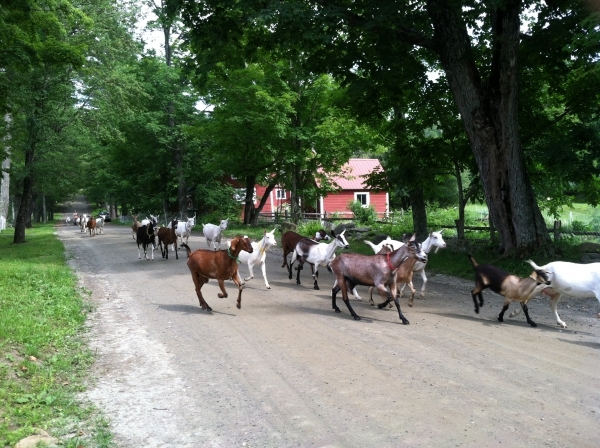BRATTLEBORO — The Vermont House wants to pump more cash into the state's “working lands.”
The fiscal year 2017 budget bill approved March 24 by the House allocates $900,490 for the popular Working Lands grant program.
That's a boost of about $189,000 from the allocation that had been proposed by the governor, said Rep. Carolyn Partridge, D-Windham, who chairs the House Agriculture and Forest Products Committee.
For a high-demand program that makes relatively small awards all over the state, any increase in funding could have an impact. Partridge said she believes the Working Lands investment makes sense, and she's hoping the Senate concurs in spite of a tight budget.
“I'm delighted, under the circumstances,” Partridge said, “Would I like to see even more? Sure.”
'Essential, catalytic investments'
The Working Lands Enterprise Initiative was created by the Legislature in 2012. The idea is that the state can make “essential, catalytic investments” in the farm and forest business sectors, allowing for-profit businesses and nonprofits to leverage other funding and grow their operations.
The program is a partnership of the Agency of Agriculture, Food and Markets; the Agency of Commerce and Community Development; and the Department of Forests, Parks and Recreation.
The Working Lands grant program has proven more popular than officials had anticipated: In the first grant cycle in fiscal year 2013, 387 applicants sought $12 million, though just $1 million was available.
The number of applications has since decreased, but more than 100 businesses and nonprofits have sought Working Lands money each year, according to the program's latest report released in February.
At the same time, though, the available Working Lands funds have been shrinking.
A state investment of $1.1 million in fiscal year 2014 dropped slightly to $1 million in fiscal 2015, then declined sharply to just $550,000 for the current grant cycle.
That trend has led to concerns about the program's sustainability.
Keeping the program alive
Partridge and her fellow committee members were credited with helping to keep Working Lands grants flowing for fiscal 2016, and that push continued in the current legislative session as the House considered next fiscal year's budget.
“Our committee went through a process,” Partridge said. “We talked about places where we would like a little more money above and beyond what had been allocated. And [Working Lands] was pretty much at the top of the list.”
That's because Partridge contends that, in an age of applying “results-based accountability” to state government, the Working Lands program “is one area where we've seen incredible results.”
State officials say they've awarded more than $3 million in Working Lands grants to 112 agriculture and forestry projects impacting all 14 counties. Those grants have leveraged another $4.9 million in matching funds.
So far, the state reports more than 100 new jobs created and a $12 million boost in Working Lands recipients' gross income. Officials expect those numbers to rise as more grant-funded projects are completed.
Success stories
The most recent Working Lands business grant recipients in Windham County were Harlow's Farmstead in Westminster and Wild Carrot Farm in Brattleboro, which received a combined $62,375 in the fiscal year 2015 cycle.
A fiscal year 2014 recipient - Townshend-based Big Picture Farm - is highlighted as a success story in the state's February report. Big Picture landed $20,000 to improve caramel and cheese production facilities, an award that co-founder Lucas Farrell has dubbed a “game-changer” for his burgeoning business.
Stories like that one have been featured prominently as Working Lands' advocates made their pitch to continue funding the program for fiscal year 2017.
“There's been a lot of work behind the scenes by the Working Lands Coalition, members of the 1,000-person Vermont Working Landscape Partnership, and grantees to champion this investment and encourage House members to promote increases,” said Paul Costello, executive director of the Vermont Council on Rural Development.
“We are excited and encouraged and now working on the Senate side in hopes that we can encourage the growth of this highly successful program,” Costello added.
In search of a dedicated revenue source
Though the Working Lands program has had statewide impact, that achievement has not yet allowed lawmakers to find a dedicated state revenue source to support it.
Partridge said she remains supportive of a “small increase” in Vermont's 9-percent tax on hotel rooms to support Working Lands grants. But that idea has gained no traction.
“Nobody wants to raise taxes,” she said.
She also noted that not all of the state's fiscal 2017 allocation for the Working Lands program will go toward grants, as some will be allocated for Agency of Agriculture administration. That allowance means that, as the grant program grows, so must its administrative budget, Partridge said.
“We have to acknowledge that there's a certain capacity for the agency to deal with, because the administration of the grants is pretty important,” Partridge said.
